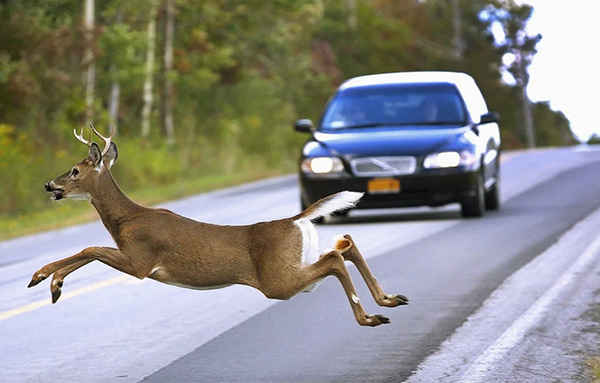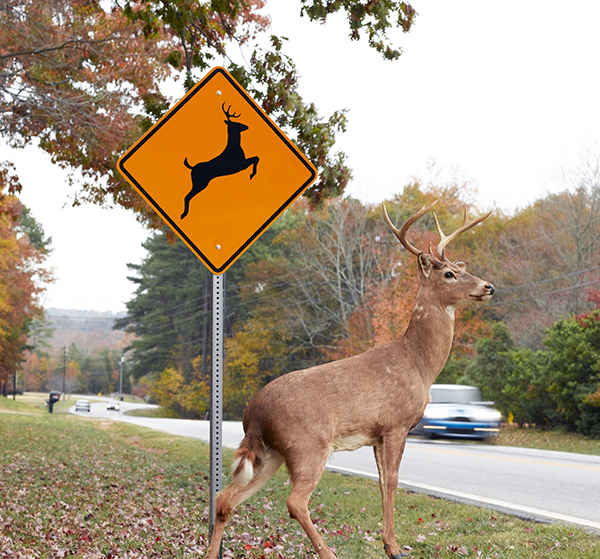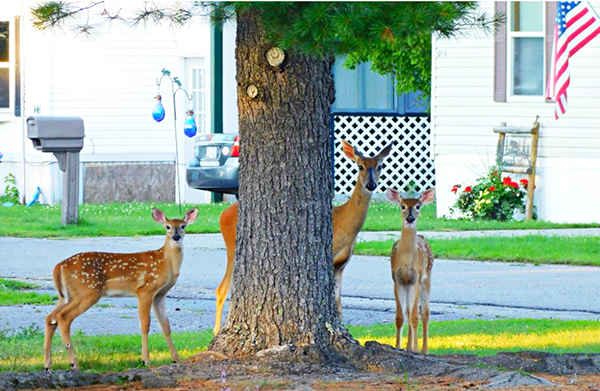Why do deer jump in front of cars?
Unraveling the Mystery of Deer-Vehicle Collisions: Why Do Deer Dash in Front of Cars?
Deer-vehicle collisions persist as a perplexing challenge, leaving countless drivers pondering: What compels deer to dart into the path of oncoming vehicles?
Let’s delve into the diverse perspectives and elements that contribute to this mystifying behavior.

The Innate Wanderer
Some contend that deer, by their very nature, are wanderers, accustomed to traversing expansive territories in search of sustenance, mates, and refuge. As human development encroaches upon their habitats, deer find themselves navigating unfamiliar landscapes, often intersected by roads and highways.
This inherent wandering instinct, combined with diminishing natural habitats, inevitably heightens the risk of deer-vehicle collisions.
The Passionate Pursuer
During mating season, or rutting season, male deer, known as bucks, are consumed by their primal urge to seek potential mates. This period of heightened hormonal activity can prompt bucks to engage in reckless behavior, example: pursuing mates across roadways, disregarding their own safety and the presence of oncoming traffic.
The Twilight Forager
Deer are crepuscular beings, most active during the dim light of dawn and dusk. Regrettably, these times coincide with peak commuting hours for humans. As drivers rush to their destinations, their paths often intersect with deer foraging for sustenance along roadsides, escalating the likelihood of collisions.
The Unfettered Roamer
In areas where natural predators of deer, like wolves or mountain lions, have been eradicated or significantly reduced, deer populations can proliferate unchecked. Liberated from the pressures of predation, deer roam more freely, encountering roads and vehicles more frequently.
The Startled Escapist
When startled or pursued by predators, deer instinctively resort to flight to evade imminent danger. This survival mechanism, ingrained over millennia of evolution, can prompt deer to dart unpredictably onto nearby roads in a desperate bid for safety.
Guidance for Road Encounters

- Maintain vigilance, particularly during dawn and dusk when deer activity peaks.
- Take heed of deer crossing signs, marking areas of frequent deer presence.
- Reduce speed and be prepared to stop upon spotting a deer near the roadway.
- If a collision is unavoidable, avoid sudden swerving, as it may lead to loss of control. Instead, apply firm braking and stay in your lane.
Fascinating Observations

While rural areas witness more deer-vehicle collisions, urban and suburban settings are not exempt.
According to the Insurance Institute for Highway Safety, the United States sees approximately 1.5 million deer-vehicle collisions annually, resulting in significant economic repercussions and numerous human casualties.
The motivations behind why deer leap in front of cars are multifaceted, encompassing innate behaviors, environmental influences, and human-induced habitat alterations.
By comprehending these dynamics, motorists can navigate roads with greater caution and coexist more harmoniously with the natural world.












